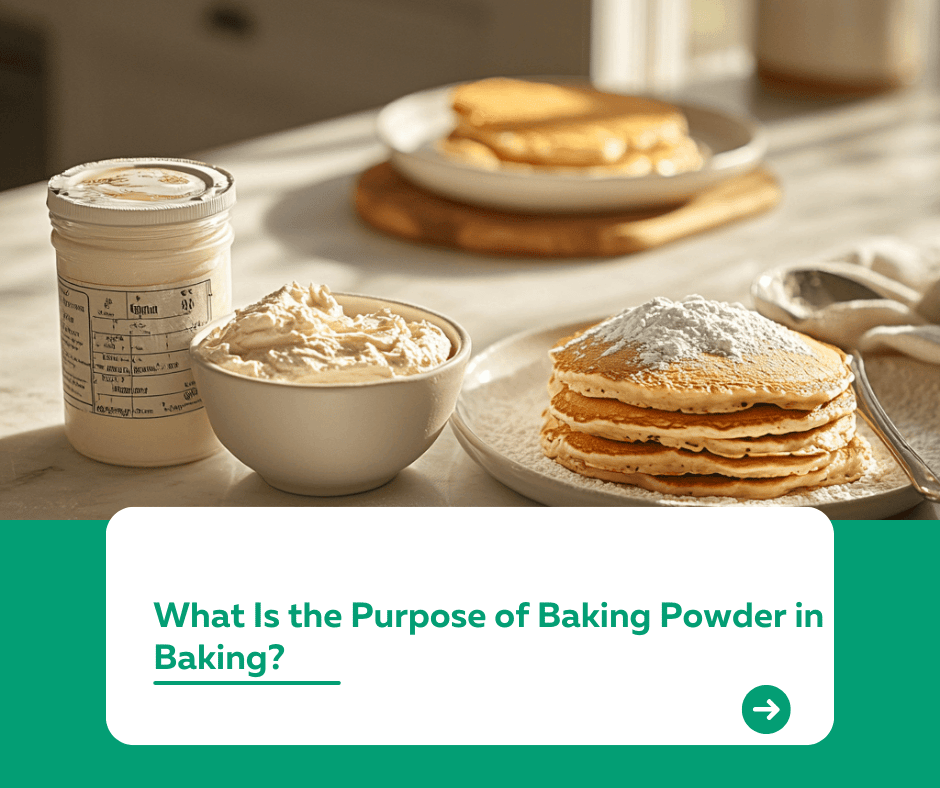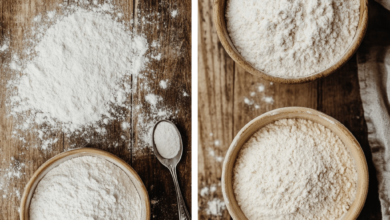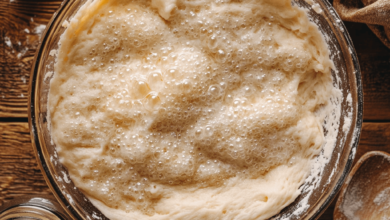What Is the Purpose of Baking Powder in Baking?

Introduction
Baking powder is a staple ingredient in many recipes, from fluffy pancakes to soft cakes. But have you ever wondered, what is the purpose of baking powder in baking? This leavening agent plays a crucial role in creating light, airy baked goods. Let’s dive into how it works and why it’s essential for your favorite recipes.
1. What Is Baking Powder?
Baking powder is a chemical leavening agent made up of three components:
- Baking Soda: The base that reacts to create carbon dioxide gas.
- Acid (like cream of tartar): Activates the baking soda.
- Starch: Prevents the reaction until liquid is added and helps with storage.
2. How Does Baking Powder Work?
The Science Behind It
When baking powder is mixed with liquid, a chemical reaction occurs:
- Carbon dioxide gas is released.
- The gas forms bubbles in the batter, causing it to rise.
Double-Acting Baking Powder
Most baking powders are double-acting, meaning they release gas twice:
- First Reaction: When mixed with liquid.
- Second Reaction: When exposed to heat during baking.
3. Why Is Baking Powder Important?
Leavening Agent
Baking powder creates the light, airy texture in baked goods by introducing air pockets.
Consistency
It ensures that cakes, muffins, and cookies rise evenly, creating a uniform texture.
Time Saver
Unlike yeast, which requires proofing time, baking powder works instantly, making it ideal for quick recipes.
4. Baking Powder vs. Baking Soda
While both are leavening agents, they are not interchangeable:
- Baking Soda: Needs an acidic ingredient (like lemon juice or yogurt) to activate.
- Baking Powder: Contains both an acid and a base, so it’s ready to use without additional acidic ingredients.
5. Common Mistakes with Baking Powder
Using Expired Baking Powder
- Always check the expiration date. Old baking powder won’t produce enough gas to leaven your baked goods.
Adding Too Much or Too Little
- Too much baking powder can cause baked goods to rise too quickly and collapse.
- Too little will result in dense, heavy textures.
Improper Storage
- Store baking powder in a cool, dry place to prevent premature reactions.
6. Tips for Using Baking Powder
- Measure accurately to avoid altering the recipe’s chemistry.
- Combine it evenly with dry ingredients before adding liquids to ensure consistent leavening.
- Test its freshness by adding a teaspoon to warm water—if it bubbles, it’s still active.
Conclusion
Baking powder is the secret behind light, fluffy, and perfectly risen baked goods. Understanding its purpose and how it works can help you bake with confidence. For more tips and insights on baking, visit our Kuestion.




